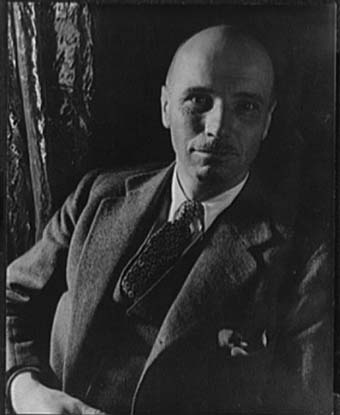Last updated: January 22, 2024
Person
Rockwell Kent

Library of Congress Photo
Rockwell Kent was born June 21, 1882, in Tarrytown Heights, New York. Prior to his time spent in Alaska, Kent lived and painted on Monhegan Island off the coast of Maine, and in Newfoundland. There he developed a love for cold, northern climates, fjords, and the isolation of island life.
In 1908, Kent married Kathleen Whiting and began his struggle to support a growing family. He often relied on his skills as an architect, designer, and builder to earn a living. Kent was a socialist, a pacifist, a lover of German culture, and spoke and read German fluently. World War One, with all its anti-German propaganda, depressed him and made him feel extremely alienated from society. In 1914, he and his family were forced to leave Newfoundland because of his pro-German sentiments. At age 36, his marriage was in trouble and he had spent over 10 years trying to earn a living as a professional artist and felt he was failing. His work was known and respected, but he still had to do odd jobs to support his family. He wondered whether he’d ever earn a living as an artist and occasionally thought of moving to Germany, or even committing suicide.
His trip to Alaska was perhaps an attempt to salvage his career and prove his artistic worth. His need for solitude, isolation, and escape from depression also brought him to Alaska. “I crave snow-topped mountains, dreary wastes, and the cruel Northern Sea with its hard horizons at the edge of the world where infinite space begins. Here skies are clearer and deeper and, for the greater wonders they reveal, a thousand times more eloquent of the eternal mystery than those of softer lands.”
Kent and his nine-year-old son, also named Rockwell, arrived in Seward aboard the steamer Admiral Farragut on Saturday, August 14, 1918. He stayed in Seward at the Sexton Hotel for several days inquiring about a suitable place to settle. He sought a location “that combined the quiet dignity of the primitive forest with the excitement of the ever-changing ocean.” He found Fox Island soon after he arrived.
When Kent arrived on Fox Island, a 71-year-old Swede and Alaska pioneer named Lars Matt Olson lived there and ran a fox farm and goat ranch in partnership with Thomas W. Hawkins of Brown and Hawkins General Store. Olson had come to Alaska in the 1880s, and gave the Kents use of a dirty goat shed that Kent refurbished using his skills as a carpenter and builder.
Kent returned to New York in March 1919 after spending only seven months in Alaska. He had wanted to stay through the summer of 1919, but his wife wanted him home. He tried unsuccessfully to get her to leave the children with his mother and come to Alaska, and he feared she would leave him if he didn’t return.
Even though his time in Alaska was short, it represented the turning point of his professional life. Upon his return to New York, he had a show of his Fox Island sketches. They sold out and his friends urged him to write and illustrate a book using his letters and journal. Kent settled in Vermont with his family, worked on his Alaska paintings, and wrote Wilderness: A Journal of Quiet Adventure in Alaska. Its publication in 1920, coincided with a successful show of his paintings. The New York Times described it as a “very beautiful and poignant record of one of the most unusual adventures ever chronicled.” Critics compared his work to Walt Whitman’s Leaves of Grass and the writings of Henry David Thoreau.
Kent wrote extensively about the surrounding climate and topography of Fox Island in Wilderness. He described Bear Glacier as a place from which, “the winds blow forever fiercely and ice cold.” He also wrote about the experience of living in isolation and the meaning of wilderness. “It seems,” Kent writes, “that we have…turned out the beaten, crowded way and come to stand face to face with that infinite and unfathomable thing which is wilderness; and here we found OURSELVES—for the wilderness is nothing else.” Like so many travelers to Alaska, Rockwell Kent found healing, solace, inspiration, and was forever changed by the beauty of the Alaska landscape.
During the 1920s and 1930s, Kent became one of America’s most respected and highly paid graphic artists. He illustrated hundreds of books, including books about his travels to Tierra del Fuego and Greenland.
Kent eventually died on March 13, 1971, in Plattsburgh, New York. He continues to be known as a painter, writer, architect, wood engraver, political activist, laborer, lobster fishermen, union organizer, and lecturer.
The Rockwell Kent Gallery and Collection of the Plattsburgh State Art Museum, State University of New York, contains the most complete and balanced collection of Rockwell Kent's work in the United States.
